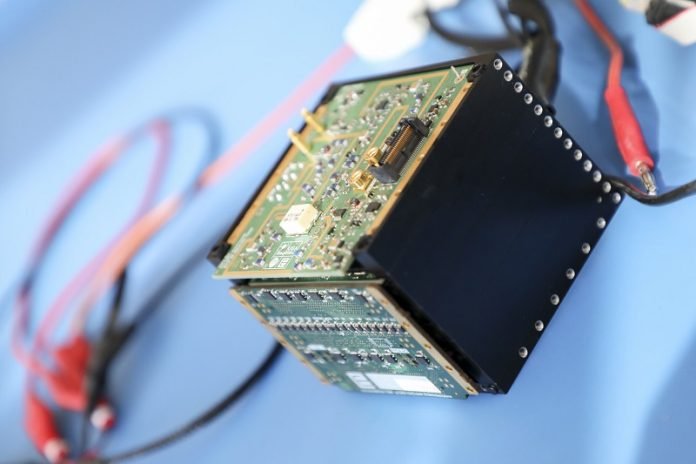
Have you ever wondered what’s inside an asteroid? A new tiny radar is about to give us a sneak peek!
A small radar, the smallest to ever fly in space, has been given to the European Space Agency (ESA) to be put on a small satellite named Juventas CubeSat.
This radar is special because it’s going to help us see inside an asteroid named Dimorphos, which is as big as the Great Pyramid in Egypt.
Last year, NASA’s DART spacecraft hit this asteroid, changing how it moved in space.
Alain Hérique from the University Grenoble Alpes in France, who’s in charge of the radar, said this is a big step.
They’ve been preparing the radar for a while and will keep watching to make sure it works perfectly with the satellite.
Before the radar is sent into space, the team will practice using it on Earth to get ready for the real action.
In 2024, the radar will head to space on a mission called Hera. Its main job is to protect our planet from asteroids.
When it reaches the asteroid Dimorphos, the radar will look up to 100 meters deep into the asteroid. This is the first time we’ll see inside an asteroid!
But what’s really cool is how small the radar and the satellite are. Imagine a small box, about 10 cm on each side – that’s the size of a unit for CubeSats, which are mini-satellites. Juventas is like six of these boxes put together.
The radar, called JuRa, fits into one of these boxes. It also has four long antennas, like metal tapes, made in Poland.
The electronics inside JuRa were made by a company in Luxembourg called EmTroniX.
This company used to make car electronics, but now they’re making stuff for space! Cedric Lorant, the boss at EmTroniX, said they’re excited to see the radar work in space after it’s put together with the satellite.
JuRa will work for about 45 hours during its two months in space.
The electronics inside JuRa are very modern, but they had to make sure they could handle the tough space environment. Space has lots of charged particles that can break electronics, so they had to test everything carefully.
The idea for JuRa came from another space radar used on ESA’s Rosetta mission. That mission looked inside a comet. JuRa is smaller and made for asteroids. Alain said that the satellite will move slowly around the asteroid, which helps JuRa to send stronger signals inside the asteroid.
Depending on how solid or loose the asteroid’s inside is, the radar might be able to see deeper or not as deep. If the asteroid has a lot of gaps and big rocks inside, the radar might not see as far.
The team is also talking about using JuRa radars for other missions to different asteroids, including one that will come close to Earth in 2029, called the Apophis asteroid.
In short, with this tiny radar, we’re about to get a special look inside a mysterious space rock! Who knows what secrets we’ll uncover?
Follow us on Twitter for more articles about this topic.
Source: European Space Agency.



